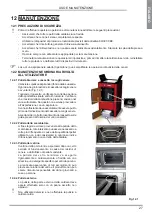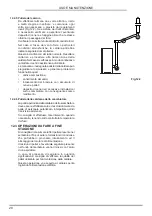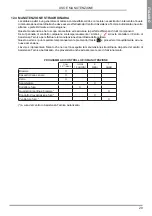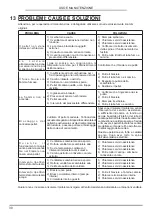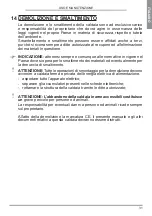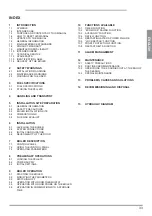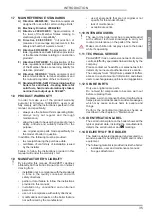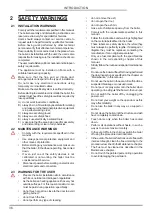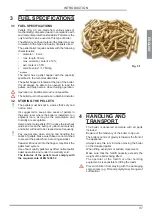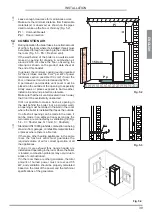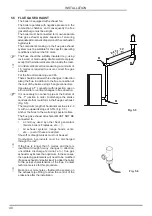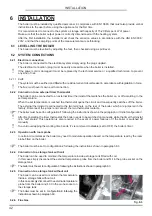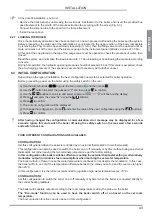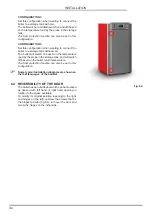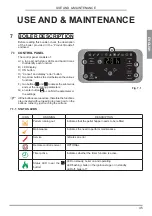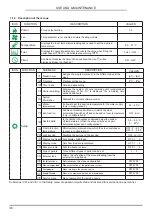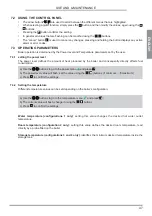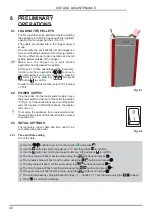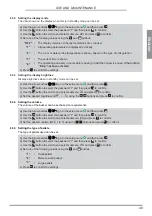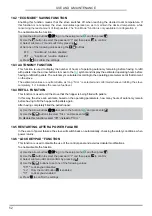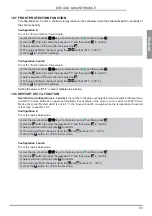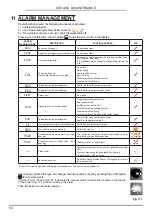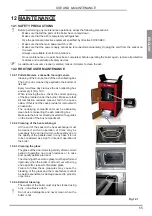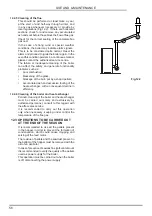
41
Fig. 5.8
Fig. 5.9
1
2
3
ENGLISH
INSTALLATION
5.5.1 Discharge through roof using a traditional
chimney
7KHFKLPQH\XVHGWRGLVFKDUJHWKHÀXHJDVPXVW
be made in accordance with standards UNI 10683
- EN 1856-1-2 - EN 1857 - EN 1443 - EN 13384-
1-3 - EN 12391-1 both as regards the dimensions
and the construction materials used.
DAMAGED chimneys made from unsuitable
material (asbestos cement, galvanised steel,
etc.... with a rough and porous inside surface) are
prohibited by law and affect proper boiler operation.
7KHÀXHJDVFDQEHGLVFKDUJHGWKURXJKDWUDGLWLRQDO
chimney (Fig. 5.8) as long as the following rules are
observed:
-
check the conditions of the chimney; old
chimneys should be renovated by introducing
steel piping with suitable insulation (rock wool,
vermiculite).
WKH ÀXH JDV FDQ EH GLVFKDUJHG GLUHFWO\ LQWR
the chimney only if the latter has a maximum
cross-section of 15 × 15 cm or diameter of 15
cm and features an inspection opening.
For larger chimneys, suitably insulated steel
pipes need to be inserted on the inside (diameter
according to the length) (Fig. 5.9).
Makes sure connections to brick chimneys are
suitably sealed.
Avoid contact with combustible materials (e.g.
wooden beams) and in any case insulate these
XVLQJ¿UHSURRIPDWHULDO
,I WKH ÀXHV UXQ WKURXJK ZRRGHQ URRIV RU ZDOOV
VSHFLDOFHUWL¿HGSDVVWKURXJKNLWVQHHGWREHXVHG
available on the market.
A) Chimney pot with wind protection
B)
Seal
C)
Inspection
1) Vermiculite and/or rock wool.
2)
Steel
pipes.
3)
Closure
panel.

